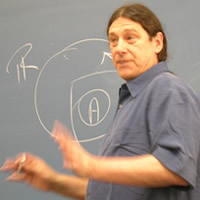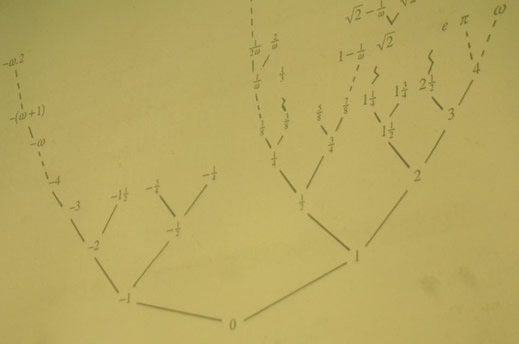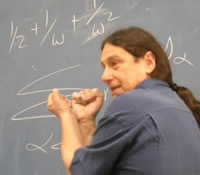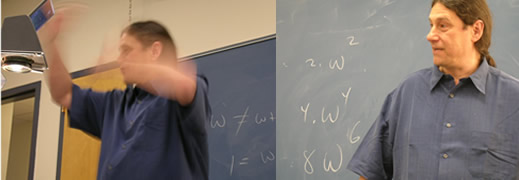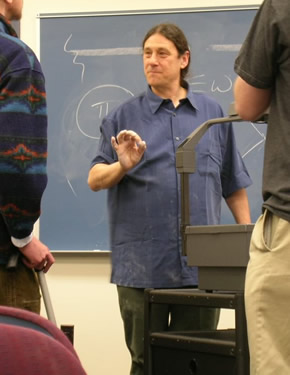
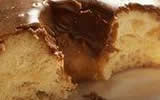
![]()
::: postdoc fellowships
::: senior fellowships
::: resident fellowships
::: associateships
![]()
being here
::: visiting
::: the last donut
::: photo album
::: center home >> being here >> last donut? >> 11 April 2006 |
Tuesday, 11 April 2006
That would be our first mistake, we soon learn. For over a century mathematicians have known of theories of continuous magnitudes that have much more in them than real numbers. They have infinitesimal magnitudes, smaller than any positive real number, but bigger than zero; and a plethora of infinitely great magnitudes, bigger than any real. And our second mistake would be to think that this is minor technical issue. It is, Phil asserts with rising passion, the central problem in the foundations of mathematics. At this point, we are glimpsing the fascinations that drive Phil's gentle smile. There are many theories of these numbers great and small. What Phil wants to show us today is what promises to be the grand theory that embraces them all. It is Conway's big number system "No." Its construction starts with a tree with 0 at the root. That branches to -1 and 1; and the 1 to 1/2 and 2; and the 2 to 1 1/2 and 3; and so on. And so on. And so on; until this swelling, branching tree has all the rational numbers and all the real numbers and all the infinitesimals and all the infinities. "It blossoms, and blossoms, and blossoms!"
It is only later that I learn from him that most of these names are infinitely big. They have to be. There are too many numbers to name finitely. So if a name is a something squared, we'll unpack the something into more parts: a something or other and a something else; and then we'll unpack these parts into more; and so on, indefinitely, like a magician endlessly pulling rabbits and doves out of his fist. Then we turn to non-standard analysis. "This is simply standard, non-standard analysis," he assures us, not realizing quite what he said. "We'll just get a flavor," Phil assures us, "there's no way I can go through all of this!"
Question time is eager. Well after it is over I glance into the seminar room. Phil is still at the blackboard, hemmed in by interrogators, beaming. John D. Norton Philip Ehrlich, Ohio University |
